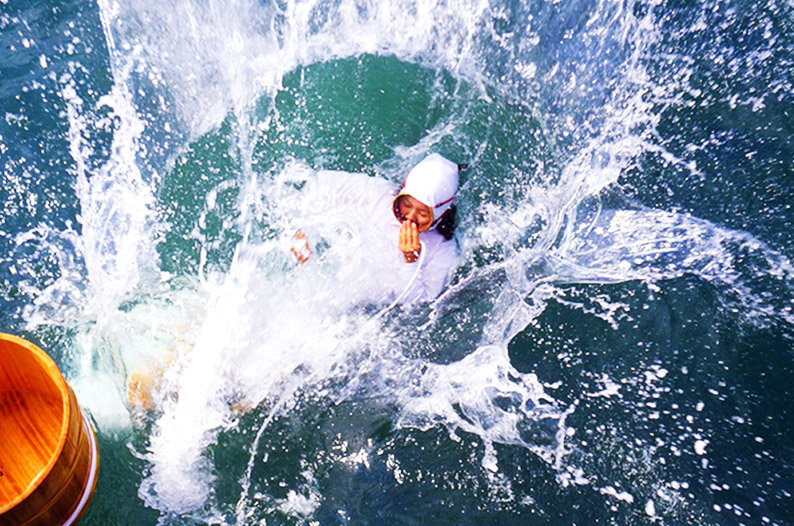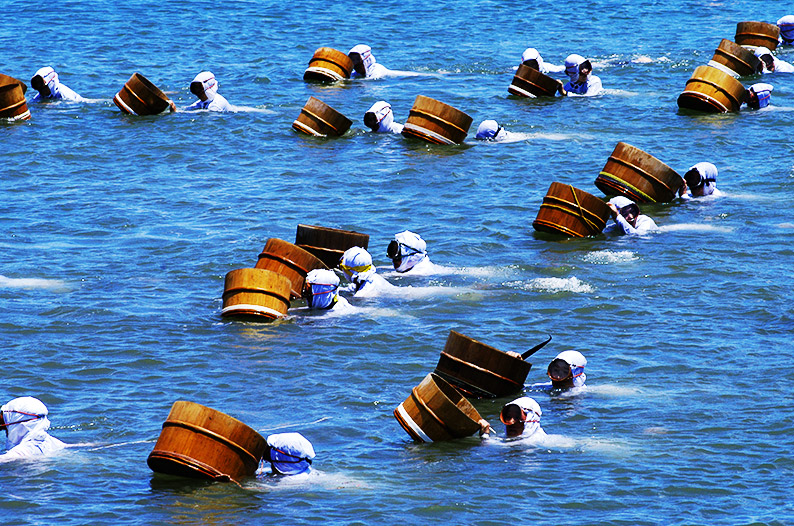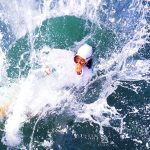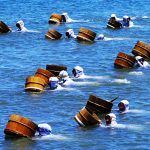In the fishing grounds of the Ise/Shima area, the culture of ama (female free divers) is a time-old tradition. In the region that is home to the Ise Grand Shine, Japan’s most sacred shrine, there used to be a ritual in which amas dived for abalone and offered their harvest to God. The origins of this ritual are said to be an Imperial princess who was so moved by abalone harvested by amas that she proposed it be offered to God. The ama population dotted the coastline along the Shima Peninsula, encircling the Ise Grand Shine. But when the abalone dive ritual took place, they congregated in Kuzaki Town, where they all dived to harvest abalone to offer to God.
When amas dive, they skin dive. They dive to the seabed, harvest shellfish and seaweed and come back to the surface, repeating the process several times. With no tanks or any other equipment, this activity is grueling and full of risk. On the other hand, this method has been esteemed over the years because amas harvest only what they need, preventing overfishing. Although amas used to dive wearing isogi, traditional ama clothing, most of them wear wetsuits nowadays.
In Osatsu, which has the highest number of active amas in Japan, there are approximately 100 female divers. Ama fishing is also prevalent in southern Toba and the remote islands. The first dive of the year takes place in mid-March, usually for seaweed. From spring to summer, amas dive for abalone, Japanese oysters, agar and sea urchin. From fall to winter, they dive for sea cucumbers and turban shells, with the last dive taking place on December 28. In certain areas, amas start their annual activity before the month of March, with kan-hijiki (edible seaweed harvested in the winter), a luxury ingredient harvested in February.
There are two types of ama fishing. They can swim to and from the shore on their own (kachido), or be taken to the fishing grounds by boat (funado). Kachido divers can go up to 10m and store their harvest in wooden tubs on the surface, whereas funado divers work in pairs, going as far as 20m deep using weights tied to their waist with rope. As the latter method requires synchronization between the diver and the boat captain, most are married couples or mother-daughter pairs. Today, there are very few funado divers.
During the season, amas can be seen from the shore. At Mikimoto Pearl Island, visitors can watch fishing demonstrations by amas wearing traditional clothing. The Osatsu Ama Cultural Resource Center in Osatsu is a precious source of information on the ama culture and history.
April 30, 2016



